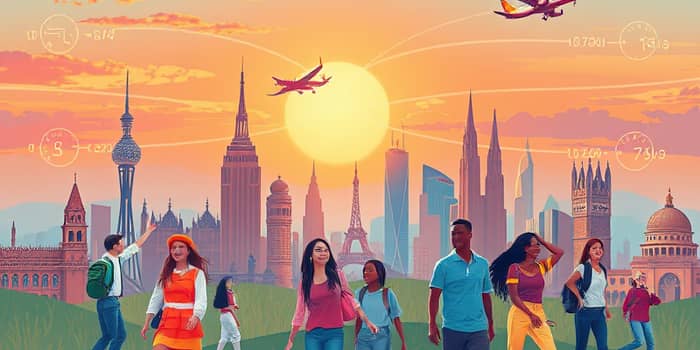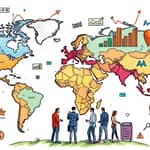
After years of upheaval, the global travel industry is not just recovering—it is soaring to unprecedented heights. As borders reopen and wanderlust returns, stakeholders across the sector are harnessing new strategies and innovations to meet the surging demand.
By 2025, international visitor spending is forecast to reach a record unprecedented global economic contribution of $2.1 trillion, surpassing pre-pandemic levels by $164 billion. Travel & Tourism’s overall contribution to global GDP is set to hit $11.7 trillion, representing 10.3% of the world economy.
These figures underscore the industry’s resilience and the power of pent-up traveler demand surging worldwide. As travelers seek experiences they postponed, the sector is expected to generate 14 million new jobs, bringing the total to 371 million—exceeding the entire population of many countries.
Recovery, however, is uneven. Asia’s rapid vaccination rollout and lifted travel restrictions have propelled arrivals and spending to new highs, while certain major markets face headwinds. In the United States, international visitor spending is projected to decline to $169 billion in 2025, a 22.5% drop from its previous peak.
Amid economic uncertainties and policy shifts, the U.S. inbound arrival recovery has been delayed until 2029. This contrast highlights the importance of agile strategies tailored to regional market dynamics.
Tourism is evolving beyond simple transportation from point A to B. Modern travelers prioritize meaningful engagement, wellness, and personalization.
Economic shifts and evolving preferences are reshaping how people plan and embark on journeys.
Despite these cautious signals, the broader narrative remains optimistic: global arrivals reached 88% of 2019’s levels in 2023, and a full recovery is anticipated by the end of 2025.
Labor shortages, policy barriers, and perceptions of unwelcomeness abroad pose tangible obstacles. Yet industry leaders are responding with forward-looking solutions.
By integrating cutting-edge digital and AI innovations, companies can streamline operations and mitigate workforce constraints while delivering seamless, customized journeys.
The travel industry’s rebound is both remarkable and instructive. As we navigate a complex post-pandemic landscape, stakeholders must prioritize strategic agility, guest-centric innovation, and responsible growth.
Emerging opportunities abound—Asia’s robust resurgence, the rise of niche travel segments, and the infusion of technology-driven efficiency. Yet headwinds remain: geopolitical shifts, policy unpredictability, and workforce development challenges.
The next chapter belongs to those who marry vision with action—who embrace sustainability without sacrificing luxury, who champion digital transformation while preserving human connection, and who craft experiences that resonate on a deeply personal level.
In this era of reinvention, the travel industry stands poised to deliver not just journeys, but lifelong memories—rekindling our collective spirit of discovery and forging connections that transcend borders.
References













